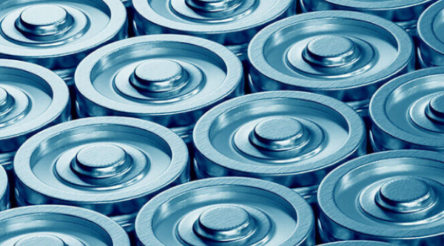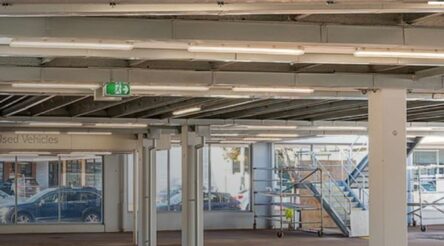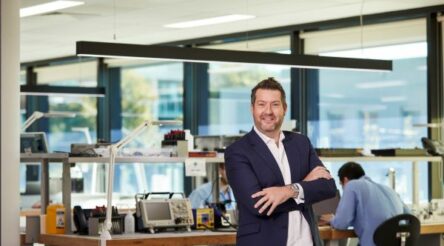BHP joins the race to produce green steel

By Peter Roberts
Suddenly, every iron ore producer and the country’s two primary steel producers are looking at ways of decarbonising the steelmaking process, or going entirely to green steel production.
Andrew Forrest’s Fortescue group is famously attempting to become Australia’s greenest company while Whyalla steelworks operator GFG Alliance has begun production of green steel pellets and even BlueScope at Port Kembla is moving cautiously towards decarbonisation.
Now even BHP, which once controlled Australian steelmaking before exiting value-added operations in favour of being a pure miner, is looking at green steel.
Once known as the big Australian, BHP and global engineering services firm, Hatch have signed an agreement to design an electric smelting furnace pilot (ESF) plant with plans to construct this facility in Australia.
BHP’s Chief Commercial Officer, Vandita Pant, said: “We see the ESF process as a critical breakthrough in significantly reducing the carbon emissions intensity of steel production and one that provides an opportunity for iron ore from our Pilbara mines.
“The steel industry has identified the ESF as a viable option to use a wider range of raw materials and steel companies globally are looking to build commercial-scale ESF plants as part of their CO2 emission reduction roadmaps.”
According to a BHP statement, the facility will aim to demonstrate a pathway to lower carbon dioxide (CO2) intensity in steel production using iron ore from BHP’s Pilbara mines for BHP’s steelmaking customers.
The small-scale demonstration plant would be used to collaborate with steel producers and technology providers to generate and share learnings with the aim of accelerating scale up of ESF plant designs.
The pilot facility would be intended to test and optimise production of iron from the ESF, a new type of furnace that is being developed by leading steel producers targeting lower CO2 emission-intensity steel.
BHP said: “The ESF is capable of producing steel from iron ore using renewable electricity and hydrogen replacing coking coal, when combined with a direct reduced iron (DRI) step.
“Estimates show that reductions of more than 80 per cent in CO2 emission intensity are potentially achievable processing Pilbara iron ores through a DRI-ESF pathway, compared with the current industry average for the conventional blast furnace steel route.”
The ESF allows for greater flexibility in input raw materials, addressing a key barrier to wider adoption of other lower CO2 emissions production routes, such as use of electric arc furnaces which are designed for scrap steel and high grade DRI only.
BHP did not say that it was preparing to re-enter large-scale steel production – it is only attempting to show a decarbonising pathway for its ores, much as rival Rio Tinto is also doing.
However it should be noted that Rio in particular has so far unmet obligations to the Western Australian government to further process iron ore in that state.
Rio partly developed then abandoned its own Hismelt technology in WA, while BHP briefly attempted to operate a Hot Briquetted Iron (HBI) facility at Port Hedland.
While these efforts led to speculation that neither iron ore producer was then genuinely committed to value-adding, the need to develop decarbonising solutions is today far more urgent.
BHP said its proposed pilot facility will enable deeper and more accurate insights into the performance of this technology for converting iron ores into molten iron and steel.
Planned test programmes will help de-risk further investment in commercial scale projects, thereby complementing development plans of BHP’s steel customers.
This scale-up approach has been utilised by other industry demonstrations such as Sweden’s HYBRIT project.
BHP and Hatch will assess several locations in Australia for the proposed facility based on supporting infrastructure, technology skills and the availability of local partnerships to build and operate the facility.
BHP’s Group Sales and Marketing Officer Michiel Hovers said: “BHP and Hatch have collaborated on steel technology and design for reducing GHG emissions from over several years, including the ESF and in collaboration with steel producers, and this project is a natural progression in our partnership.”
Further reading:
FIRST GREENSTEEL PELLETS MADE AT WHYALLA STEELWORKS
BLUESCOPE, UOW ANNOUNCE 13-MONTH STEELMAKING DECARBONISATION PROJECT
RIO’S HISMELT AND WA’S IRON ORE – THE VALUE ADDING OPPORTUNITY THAT SILPPED THROUGH OUR GRASP.
Picture: BHP
@aumanufacturing Sections
Analysis and Commentary Awards Defence Manufacturing News Podcast Technology Videos










